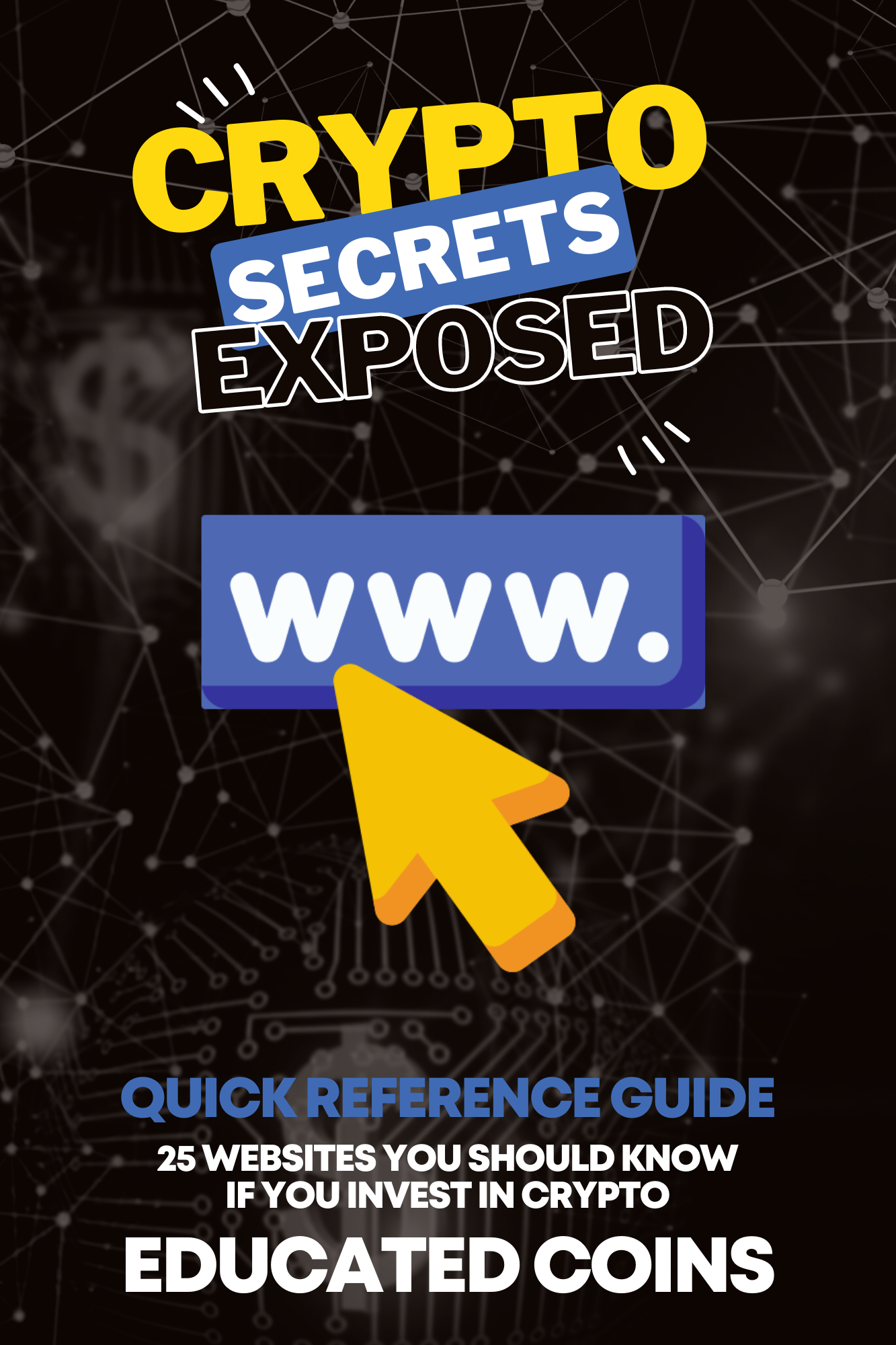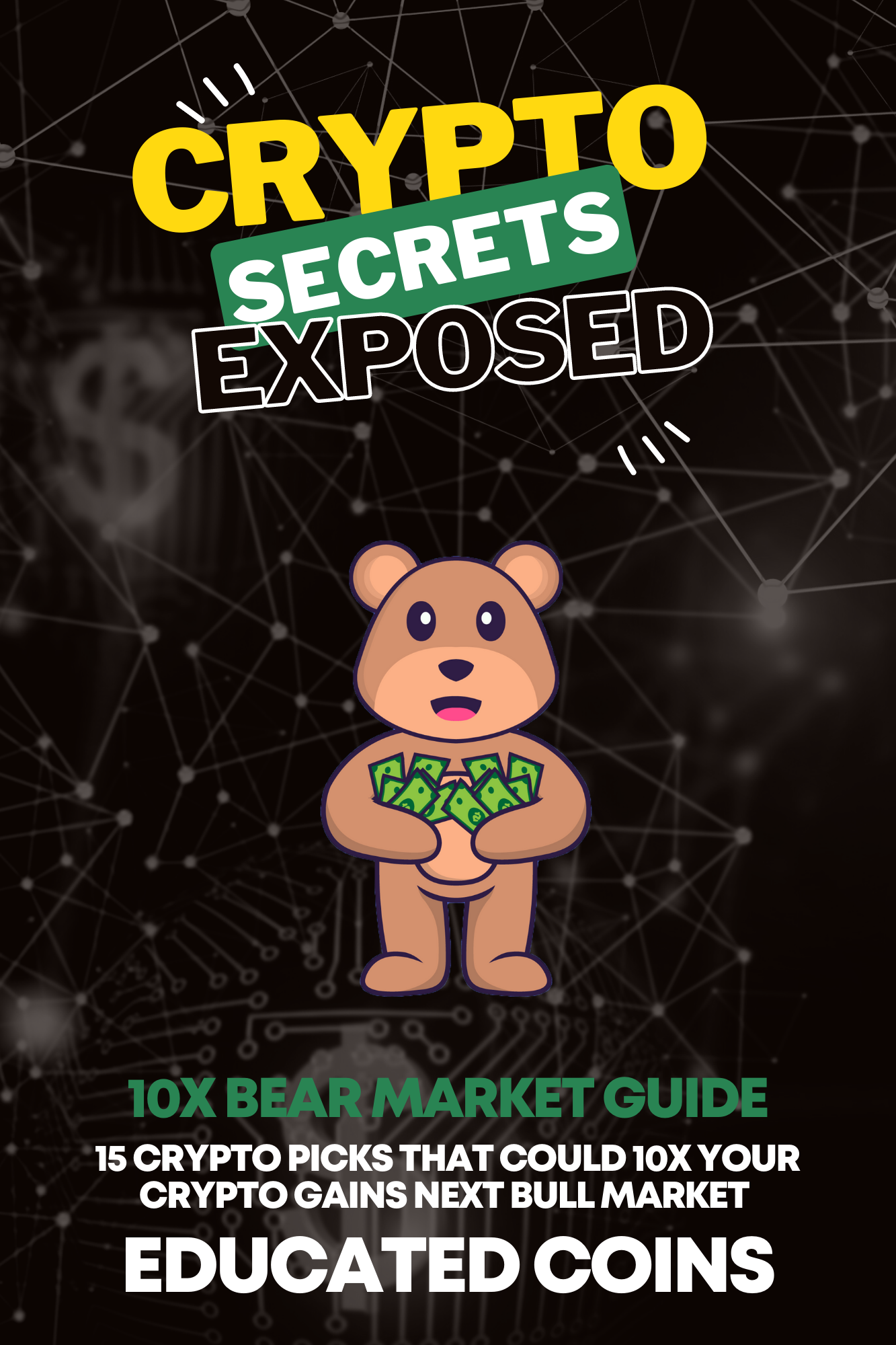Below, please find a resource center for crypto enthusiasts and crypto investors in the earliest phases of their crypto investing journey. This resource was created as I was working to summarize answers to my most frequently asked questions. The goal of this resource is to inform not just a few, but many. I will continue to educate those who seek enlightenment and true freedom from the chains of government and elitist oppression.
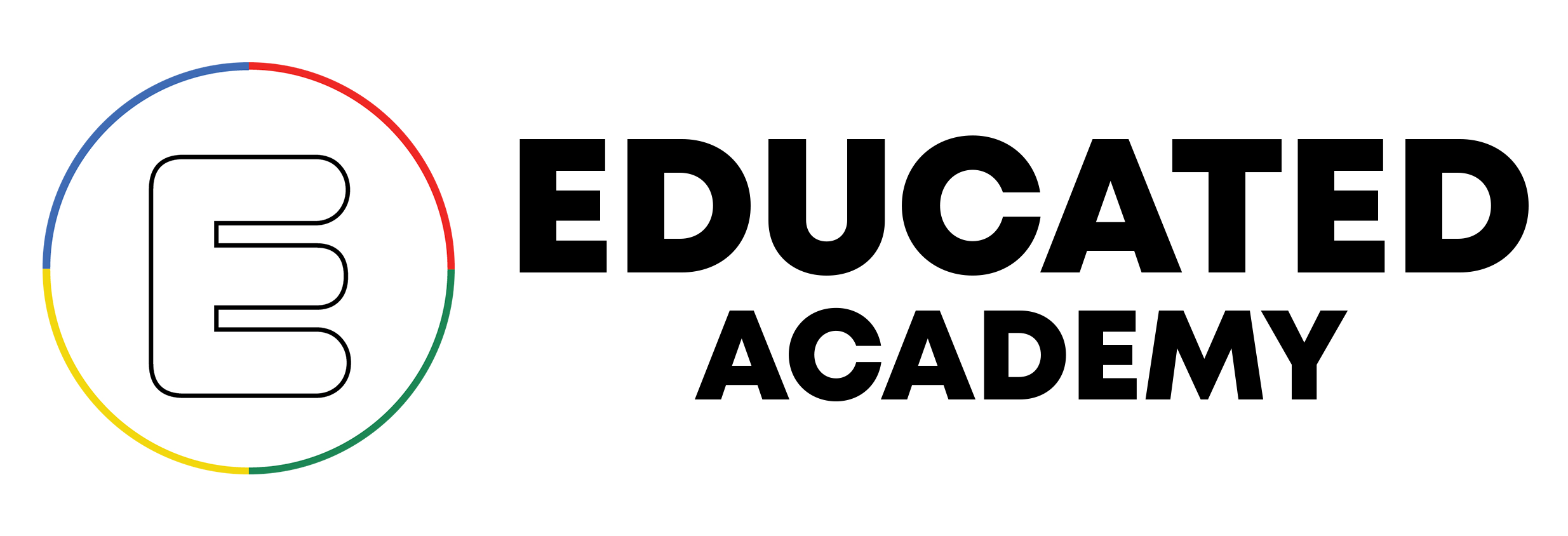
FROM A-Z
(TABLE OF CONTENTS)
What's going on in the world today with all the chaos that we see, life is no longer about right vs. left. It's about freedom vs authoritarianism, ordinary people vs. elites, centralization vs. decentralization, technocratic corporatism vs. democracy, grass-roots vs. top-down structures of power; anti-establishment vs. establishment. The truth is all out in the open for those to see, who are willing to see. My aim is not only to bring visibility to this cause --which as you know is being ignored by the media or being completely vilified by the media--but also to do it from a consciousness/spiritual angle, emphasizing the need to come together and see each other with empathy and compassion. I hope that this project resonates with all of you. Thank you!
GROW YOUR CRYPTO VOCAB!
Cryptocurrency
A special kind of money that exists only in the digital world that is super secure because it uses secret codes created with cryptography. All transactions using this money get recorded on a blockchain.
Bitcoin
The first and most well-known digital currency that is not controlled by a central authority.
Blockchain
A collection of blocks that, when put together, form a permanent, unchangeable ledger that shows the history of cryptoasset transactions.
Wallet
A special software or device that helps you store and manage your cryptoassets, it can or cannot be connected to the internet.
Exchange
A platform where you can buy, sell, and trade cryptoassets.
Altcoin
Any cryptoasset that is not Bitcoin.
Mining
The process of checking and adding new transactions to a blockchain by using computers to solve difficult math problems no human can solve.
Cryptotoken
A cryptoasset that does not have it's own blockchain; a unit of value in a blockchain ecosystem
Public Key
A shareable code that is made up of numbers and letters that is kind of like a username, it allows people to send, receive and transfer cryptoassets.
Private Key
A unique code that can be numbers and letters thats acts like a password to give access to someones cryptoassets; most people keep them hid in really secret places.
ICO (Initial Coin Offering)
When a new cryptocurrency is created and sold to raise money for a project.
Smart Contract
A special kind of computer programmable contract that automatically does things when certain conditions or requirements are met.
Decentralization
The transfer of command and control to a distrubuted network from a centralized entity (person, governemt, organization, or group).
P2P (Peer-to-Peer)
When people can directly interact with each other without a middleman or a centralized server or database.
Fiat (Paper Money)
The official currency of a nation, such as dollars or euros; it only has value because the government exists and has no real value except for in people's minds.
Market Cap
The total value of a cryptoasset based on its price and how many of the specific cryptoasset are available.
Volatility
How much and how often the price of a cryptoasset goes up and down.
HODL (Hold On for Dear Life)
A word people use in the crypto community to say they are holding onto their cryptoassets instead of selling them even if the price or value may go down.
Fork
When a blockchain's rules are changed causing the creation of completely new and separate blockchain.
DApp (Decentralized Application)
A special kind of software that runs on a blockchain and doesn't need a central authority and can't be controlled by a single person.
MONEY SIMPLY EXPLAINED!
HOW MONEY WENT FROM COWS TO CASH TO COMPUTERS
Money was created by humans.
Money is really important, almost as important as the air we need to breathe. And even though money is important, it's just something humans invented. It's important to remember that whoever controls money has a lot of power in the world.
We need money to take care of ourselves and to buy things we need, like food, clothes, and a home. Humans have been using money for a long time. It's like a special tool that helps us trade things with each other. Money comes in many different forms, such as coins, bills, checks, credit cards, and digital wallets. Money has also been used to show social status, making people who have more money liked by more people. Now let's take a look at how money has changed over time.
- Trading Cows
- Seashell Riches
- Heavy Metals & Coins
- Banknotes Save The Day
- Creating a Paper Trail
- Money Meets The Internet
- The Unstoppable Rise of Digital Money
When somebody has something we want we will always find a way to trade for it. A long time ago in Egypt people used to trade things like spices, animal fur, weapons and even cows for land, food and other things.


In ancient China, around 1200 B.C., people came up with a clever way to use seashells as money. They realized that carrying around heavy things like cows or bags of grain all the time was difficult. So, they decided to use seashells instead because they were lightweight and easy to carry. It made trading and buying things much easier for them.
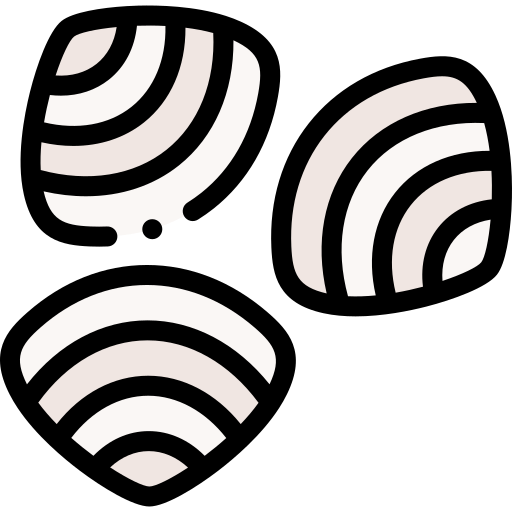
After people started using seashells as a way of paying for things, in West Lydia around the 7th century B.C., they came up with another clever idea. They made small coins out of precious metals like gold and silver. These coins were better than seashells because they were easier to carry and they didn't break easily. People loved using these coins because they lasted a long time and made trading much easier.
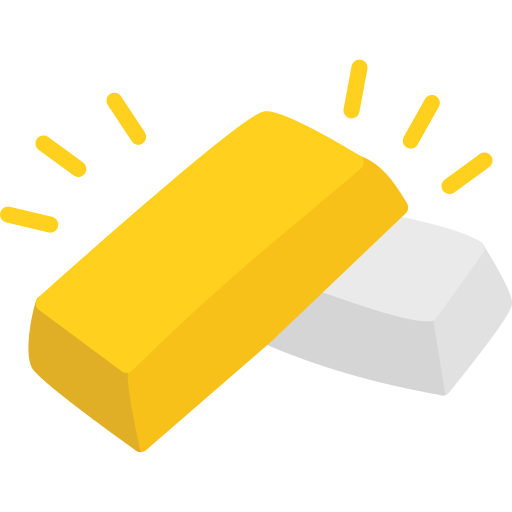

Eventually, carrying coins every day became too heavy also. Around 30 B.C. in China, the first banknotes were created. They were made using 1-foot-square pieces of deer skin. These banknotes were special because they represented different values of coins. They made it even easier to buy the things you need.
On Dec 10th, 1690, the Massachusetts Bay Colony made the first paper notes, but the U.S. government didn't start using them until 1861. Before that, money was usually made of gold or silver, but with paper money, things changed. Instead of being backed by gold or silver, the value of paper money now depends on how strong a country's economy is.
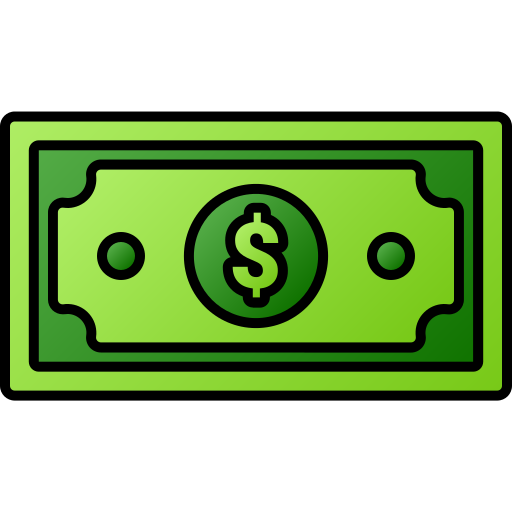
In the late 1990s and early 2000s, something big happened with money. People stopped using paper money and coins as much and started using something called electronic transactions. This happened because of the internet and online shopping. It became really easy to buy things online and pay for them with just a few clicks. Since then, people have been carrying less cash and using things like credit cards and other electronic ways to pay for stuff more often.

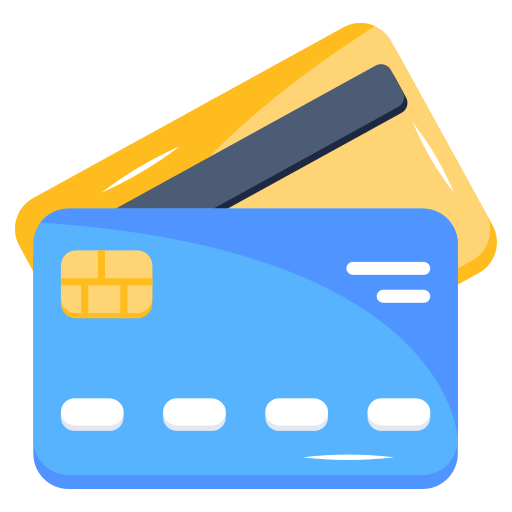
Nowadays, we're seeing less and less use of physical money. Instead, we're using credit and debit cards, along with apps like Venmo, Paypal, and Apple Pay. These apps are connected to our bank accounts, so we can easily pay for things without using cash. Because of this, a new kind of money called cryptocurrency has become popular. The first cryptocurrency, called Bitcoin, started in 2009. It's different because it doesn't need a bank to control it. Instead, computers connect directly with each other to make transactions. After Bitcoin, more cryptocurrencies were also created slowly ending the use of paper money.
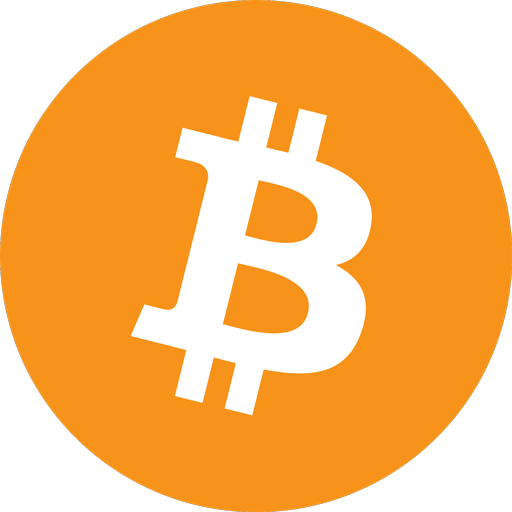
THE HISTORY OF CRYPTO!

The Pioneer of Cryptography
Many people wonder who created cryptocurrency, and I'm here to provide the answer. The person who started the concept of cryptocurrency is David Chaum. In my opinion, he deserves more recognition because he took risks to protect everyone's rights to life, freedom, and happiness.
Here's a link to an article about David Chaum that you should read to learn more about the early days of cryptography, which is the foundation of cryptocurrency. Click Here!
But it's important to note that David Chaum is not the creator of Bitcoin, the first and most well-known cryptocurrency. Bitcoin was made by someone anonymous named Satoshi Nakamoto.
CRYPTOASSETS SIMPLY EXPLAINED
- WHAT IS A CRYPTOASSET?
- WHAT IS CRYPTOCURRENCY?
- HOW DOES CRYPTOCURRENCY WORK?
- WHAT IS BLOCKCHAIN TECHNOLOGY?
- HOW CAN I BUY CRYPTOCURRENCY?
- WHAT IS THE DIFFERENCE BETWEEN BITCOINS AND ALTCOINS?
- Bitcoin was the first cryptocurrency and is the most well-known.
- It was created by an anonymous person or group called Satoshi Nakamoto.
- Bitcoin has the highest market value and is often referred to as digital gold.
- It is the most widely accepted cryptocurrency for payments and is used as a store of value.
- Bitcoin's technology is based on a decentralized system called blockchain.
- Altcoins (short for "alternative coins") refer to all other cryptocurrencies besides Bitcoin.
- There are thousands of altcoins, each with its own features, purposes, and technologies.
- Examples of altcoins include Ethereum, Litecoin, Ripple, and many more.
- Altcoins often have different goals, such as improving upon Bitcoin's technology or focusing on specific industries or applications.
- Some altcoins offer different features, like faster transaction times or more privacy.
- WHAT IS A WALLET AND HOW DO I SET UP ONE?
- HOW DO I SECURELY STORE MY CRYPTOCURRENCIES?
- WHAT IS A PRIVATE KEY AND A PUBLIC KEY?
- A private key is like a secret code that only you know.
- It's a long string of numbers and letters that acts as the key to access and control your cryptocurrencies.
- Think of it like a key to a lock that keeps your coins safe.
- Your private key should be kept secret and never shared with anyone else.
- It allows you to sign transactions and prove that you are the rightful owner of the cryptocurrencies in your wallet.
- A public key is like your wallet's address that you can share with others.
- It's also a long string of numbers and letters, but it's created from your private key.
- You can think of it as the address where others can send you cryptocurrencies.
- Your public key is safe to share with others because it only allows people to send you coins; they can't access or control your wallet.
- It's used to generate a unique address where others can send cryptocurrencies to you.
- HOW DO I SEND AND RECEIVE CRYPTOCURRENCY?
A cryptoasset is a special type of digital thing that has its value stored on a computer system called blockchain. It's like having something valuable, but instead of holding it in your hands, it's stored online. When people do things with a cryptoasset, like buy or sell them, those actions are recorded on the blockchain computer system too. Cryptoassets can be different kinds of digital things, like a cryptocurrency, cryptocommodity, cryptotoken, security token, stablecoin or an NFT.
Cryptocurrency is a special kind of digital money. It's like regular money that you can use to buy things, but it's all online and not physical (meaning you can never touch it or hold it in your hands like coins or dollars). Instead of coins or paper bills, cryptocurrencies are stored in computer systems called blockchains. These blockchains keep everything secure and track every transactions. So, think of cryptocurrency as digital money that you can use to buy stuff on the internet or in some physical stores!
Cryptocurrency works using something called blockchain technology. Imagine a big online ledger or record book where all the transactions are stored. When you want to send or receive cryptocurrency, the information about that transaction gets added to the ledger. But here's the cool part: instead of a single person or company controlling the ledger, it's controlled by a lot of different computers around the world, and gives the control to different people who don't know each other. These different computers around the world are called nodes and they work together to make sure the transactions are valid and secure. This way, no one can cheat or make fake transactions. It's like a team of computers keeping track of who has how much cryptocurrency.
Blockchain technology is like a special kind of computer system. It keeps track of information in a way that is very secure and cannot be easily changed. Instead of one person, group, government, or organization controlling the information, it is copied and stored on many different computers, controlled by people who don't know each other. The information stored on this computer system is made up of smaller blocks of information that are linked together in a chain, which is why it's called a blockchain. It helps to make things like cryptocurrencies, digital contracts, and online transactions safer, faster, and more reliable.
To buy cryptocurrency, you need to follow these simple steps:
Step 1: Choose a cryptocurrency exchange or platform that allows you to buy cryptocurrencies.
Step 2: Create an account on the chosen platform. You might need to provide some personal information, like your name and email.
Step 3: Connect your bank account or credit/debit card to the platform. This will allow you to transfer money to buy cryptocurrencies.
Step 4: Decide which cryptocurrency you want to buy. The most well-known one is Bitcoin, but there are many others to choose from.
Step 5: Enter the amount of money you want to spend or the number of coins you want to buy.
Step 6: Review your purchase details to make sure everything is correct.
Step 7: Confirm the purchase. The platform will use your money to buy the cryptocurrency and add it to your account.
Bitcoin and altcoins are both types of cryptocurrencies, but there are some differences between them. Here's a simple explanation:
Bitcoin:
Altcoins:
In summary, Bitcoin is the first and most well-known cryptocurrency, while altcoins are all the other cryptocurrencies that have been created since then. Each altcoin has its own unique characteristics and purposes.
A wallet in the context of cryptocurrency is a digital place where you can store your cryptocurrencies. It's like a virtual wallet that keeps track of your coins and allows you to send and receive them. Here's a simple explanation of how to set up a wallet:
Step 1: Choose a wallet provider: There are different types of wallets, such as software wallets, hardware wallets, and online wallets. Each has its own benefits and security features. Research and choose a reputable wallet provider that suits your needs.
Step 2: Sign up or download the wallet: Visit the website or app store of the wallet provider you selected. Sign up for an account or download the wallet application to your device. Make sure you download it from the official source to avoid scams or fake wallets.
Step 3: Create a new wallet: Follow the instructions to create a new wallet within the chosen wallet provider's platform. This may involve setting a strong password and creating a backup phrase or recovery seed.
Step 4: Secure your wallet: Take steps to enhance the security of your wallet. Enable two-factor authentication if available, and follow any additional security measures recommended by the wallet provider. Safeguard your wallet's login credentials and backup phrase/seed.
Step 5: Receive and send cryptocurrencies: Your wallet will provide you with a unique address for each cryptocurrency. This address acts as your account number, allowing others to send you coins. To receive cryptocurrencies, share your wallet address with the sender. When you want to send cryptocurrencies, use the recipient's wallet address.
Step 1: Use a secure wallet: A wallet is like a digital piggy bank for your cryptocurrencies. Choose a wallet that has good security features and a good reputation.
Step 2: Keep your wallet offline: Storing your cryptocurrencies offline is a lot safer because it reduces the risk or any chances of hackers accessing your wallet. This is called a "cold wallet" or "hardware wallet."
Step 3: Protect your wallet with a strong password: Choose a password that is unique and hard for anyone to guess. Use a mix of letters, numbers, and symbols. Don't tell anyone your password.
Step 4: Backup your wallet: It's important to have a backup of your wallet in case your device gets lost or damaged. Keep a copy of your wallet's backup phrase or recovery seed in a safe place, like a piece of paper stored in a secure location.
Step 5: Be extremely careful with your wallet information: Don't tell anyone your wallet's private key or backup phrase. Keep them secret and safe. Also don't enter them into websites or apps that you're not sure are trustworthy.
Step 6: Update your software: Keep your wallet's software up to date. Updates most times include important security improvements that will help protect your cryptocurrencies and keep them safe hackers.
Step 7: Be cautious of phishing attempts: Watch out for suspicious emails or messages asking for your wallet information. Scammers or hackers might try to trick you into giving away your cryptocurrency.
Remember, it's important to be responsible and take any steps required to keep your cryptocurrencies safe. If you have any doubts or questions, it's always a good idea to seek guidance from a knowledgeable source.
A private key and a public key are two of the most important parts of the cryptographic system used in cryptocurrencies. Below is a simple explanation of each:
Private Key:
Public Key:
In summary, a private key is like a secret key that gives you control over your cryptocurrencies, while a public key is an address where others can send you cryptocurrencies. Keep your private key secret, and feel free to share your public key or wallet address with others to receive coins.
Sending and receiving cryptocurrency involves a few simple steps. Here's a straightforward explanation:
Sending Cryptocurrency:
Step 1: Open your cryptocurrency wallet on your computer or smartphone.
Step 2: Choose the option to send or transfer funds.
Step 3: Enter the recipient's wallet address. This is like their cryptocurrency account number.
Step 4: Enter the amount of cryptocurrency you want to send.
Step 5: Double-check that the wallet address and amount are correct.
Step 6: Confirm the transaction and wait for it to be processed
Step 7: The cryptocurrency will be sent from your wallet to the recipient's wallet.
Receiving Cryptocurrency:
Step 1: Get your wallet's public address. This is like your cryptocurrency account number, and it's found in your wallet.
Step 2: Share your public address with the person who wants to send you cryptocurrency.
Step 3: They enter your public address in their wallet when sending the funds.
Step 4: Wait for the transaction to be confirmed and processed.
Step 5: The cryptocurrency will be sent from the sender's wallet to your wallet.
It's essential to copy and enter wallet addresses carefully to ensure the funds are sent to the intended recipient. Additionally, transaction times may vary depending on the cryptocurrency and network congestion. Always double-check the details before confirming any transaction.
CENTRALIZED EXCHANGE WEBSITES YOU SHOULD KNOW
| Website Name | Website Link |
|---|---|
| Coinbase | Click Here |
| Binance (US) | Click Here |
| Binance (Global) | Click Here |
| Kraken | Click Here |
| Kucoin | Click Here |
| Gemini | Click Here |
CRYPTO WALLETS YOU SHOULD KNOW
| Wallet Name | Website Link |
|---|---|
| Arculus | Click Here |
| Ledger Nano X | Click Here |
| Trezor Model T | Click Here |
| Ellipal Titan Bundle | Click Here |
| Ledger Nano S Plus | Click Here |
CRYPTO TRACKING WEBSITES YOU SHOULD KNOW
| Website Name | Website Link |
|---|---|
| CoinMarketCap | Click Here |
| CoinGecko | Click Here |
| Crypto Bubbles | Click Here |
| DexTools | Click Here |
| Messari | Click Here |
| Poo Coin | Click Here |
| Live Coin Watch | Click Here |
| Coin360 | Click Here |
| Dex Screener | Click Here |
| TradingView | Click Here |
CRYPTO NEWS WEBSITES YOU SHOULD KNOW
| Website Name | Website Link |
|---|---|
| Bitcoin | Click Here |
| Bitcoinist | Click Here |
| Blockonomi | Click Here |
| Blockworks.co | Click Here |
| Coin Desk | Click Here |
| Coin Telegraph | Click Here |
| Crypto News | Click Here |
| Crypto Slate | Click Here |
| Daily HODL | Click Here |
| Decrypto | Click Here |
| Invest In Blockchain | Click Here |
| Crypto Panic | Click Here |
| Today On Chain | Click Here |
DECENTRALIZED EXCHANGE WEBSITES YOU SHOULD KNOW
| Blockchain | DEX Name | DApp Link |
|---|---|---|
| Ethereum | UniSwap | Click Here |
| Ethereum | SushiSwap | Click Here |
| Binance Smart Chain | PancakeSwap | Click Here |
| Binance Smart Chain | ApeSwap | Click Here |
| Solana | Raydium | Click Here |
| Polygon | QuickSwap | Click Here |
| Multichain DEX | Coin98 | Click Here |
CRYPTO GUIDES
CRYPTO GLOSSARY
51% Attack
When someone takes control of more than half of a cryptoasset network's computers and can change things.
Address
A special code that shows where to send and receive cryptoassets.
Air Drop
When people get free cryptoassets for various reasons that can be sent automatically to their cryptoasset wallets.
Altcoin
Any cryptoasset that is not Bitcoin.
AML (Anti-Money Laundering)
Rules and measures to prevent people from using cryptoassets to hide or move illegally obtained money.
ATH (All-Time High)
The highest price that a cryptoasset has ever reached.
Atomic Swap
A way to directly trade one cryptoasset for another without any middlemen.
Bear Market
When the prices of cryptocurrencies are going down, and people dont have much faith in the market.
Bitcoin
The first and most well-known digital currency that is not controlled by a central authority.
Bitcoin Dominance
How much of the whole cryptocurrency market is made up of Bitcoin.
Block
A group of transactions that are added to a blockchain network.
Blockchain
A collection of blocks that, when put together, form a permanent, unchangeable ledger that shows the history of cryptoasset transactions
Block Explorer
A tool that lets you see and search for information about transactions and blocks in a blockchain network.
Blue Chip
A cryptoasset that is considered safe and reliable, like a big, strong company on the stock market.
Bull Market
When the prices of cryptoassets are going up, and people have a lot of faith in the market.
Centralized
When a single entity (person, group, organization or government) or small group of entities are in complete control of a blockchain or blockchain network.
Ce-De-Fi (Centralized Decentralized Finance)
Trading market that can be controlled by a central authority if needed but mostly operates like a free market without standards and regulations.
CEX (Centralized Exchange)
A platform where you can trade cryptoassets, but it's controlled by a central authority or company.
Ce-Fi (Centralized Finance)
Trading market that is controlled by a central authority, completely under government and bank control. Central authority determines who can and cant invest and sets interest rates in the market.
Central Bank
The main bank in a country that controls the money supply and sets the rules for the economy.
CBDC (Central Bank Digital Currency)
Digital money issued by a country's central bank thats can possibly allow for a country to have complete control over everyone's money.
Circulating Supply
The total number of coins or tokens that are available and being used in the market of a specific cryptoasset.
Cold Wallet (Cold Storage)
Any way of storing cryptoassets on a device that is not connected to the internet (for example: notebook paper or secured hard drive).
Consensus
When everyone agrees on what is happening on a blockchain and inside of the blockchain network.
Consensus Mechanism
A procedure for confirming new blocks that keeps the blockchain secure.
CPI (Consumer Price Index)
A measure of how prices for goods and services change over time.
Cross-chain Bridge
A software or dApp that allows you to move cryptoassets in between different blockchains.
Cryptoasset
Anything digital that is kept safe with secret codes and stored on a blockchain. It can be different types of digital stuff like money, special items, or tokens that have their own value.
Cryptocommodity
Raw digital materials that are used as building blocks to build products in crypto (for example: computer power, computer space to store information, and internet speed to build dApps).
Cryptocurrency
A special kind of money that exists only in the digital world that is super secure because it uses secret codes created with cryptography. All transactions using this money get recorded on a blockchain.
Cryptography
A way of keeping information safe by using secret codes that are created with really difficult math problems no human can solve.
Cryptotoken
A cryptoasset that does not have it's own blockchain.
Currency
Anything that can be used for exchange of value, store of value, or unit of account.
Decentralization
The transfer of command and control to a distrubuted network from a centralized entity (person, governemt, organization, or group).
dApp (Decentralized Application)
A special kind of software that runs on a blockchain and doesn't need a central authority and can't be controlled by a single person.
DAO (Decentralized Autonomous Organization)
An organization that uses smart contracts to enforce rules and is controlled by its members thru voting.
DEX (Decentralized Exchange)
A online Dapp that allows people to trade cryptoassets directly with each other.
De-Fi (Decentralized Finance)
Trading market that is not controlled by a central authority or under any government and bank control. The free market sets all prices and interest rates.
Double-spending
Spending the same cryptocurrency more than once, which is not allowed.
Fiat (Paper Money)
The official currency of a nation, such as dollars or euros; it only has value because the government exists and has no real value except for in people's minds.
Fork
When a blockchain's rules are changed causing the creation of completely new and separate blockchain.
FUD (Fear, Uncertainty, Doubt)
Term used by investors when a cryptoasset's value may go down as traders and investors lose faith and start selling their holdings, for either fiat money or another more secure and safe cryptoasset.
Gas
A unit of measurement for how much work is needed to do something on a blockchain.
Gas Fees
The amount you pay to do things on a blockchain network, like making a transaction.
Governance Token
A special kind of cryptoasset that lets you have a say in how a platform or organization works.
Hash
A combination of numbers and letters that is unique; it's used to help find difficult math solutions to identify and validate blocks to secure and maintain a blockchain.
Hash Rate
The total amount of computer power being used to mine and process transactions on a Proof-of-Work blockchain.
HODL (Hold On for Dear Life)
A word people use in the crypto community to say they are holding onto their cryptoassets instead of selling them even if the price or value may go down.
Hot Wallet (Online Storage)
Any online private cryptoasset storage option, such as digital wallets that are used on web browsers, phone apps or any device connected to the internet.
ICO (Initial Coin Offering)
When a new cryptocurrency is created and sold to raise money for a project.
IDO (Initial DEX Offering)
When a new cryptocurrency is launched directly on a decentralized exchange.
IEO (Initial Exchange Offering)
When a new cryptocurrency is offered for sale on a centralized exchange.
ILO (Initial Liquidity Offering)
When a new cryptocurrency is paired with an existing cryptocurrency and sold on a decentralized exchange.
INFTO (Initial NFT Offering)
When a new digital collectible is sold for the first time.
KYC (Know Your Customer)
Government rules that are followed by some centralized exchanges that requires exchange customers and users to provide identity information to purchase, sell, or trade cryptoassets.
Layer 2 (Scaling Solutions)
Technologies or methods that are created to work with blockchains to make blockchain networks faster and able to handle more transactions.
Market Cap
The total value of a cryptoasset based on its price and how many of the specific cryptoasset are available.
Merkle Tree
A special way of organizing data on a blockchain to make sure it's safe and hasn't been changed.
Mining
The process of checking and adding new transactions to a blockchain by using computers to solve difficult math problems no human can solve.
NFT (Non-Fungible Token)
A special kind of digital token that represents something unique, like art or collectibles, or maybe even physical real estate.
Node
A computer or device that helps run and maintain a blockchain network.
Oracles
Special and secure sources of information that smart contracts use to get real-world data.
P2P (Peer-to-Peer)
When people can directly interact with each other without a middleman or a centralized server or database.
Privacy Coin
A cryptocurrency that gives users more privacy and anonymity when doing transactions on the blockchain.
Private Key
A unique code that can be numbers and letters thats acts like a password to give access to someones cryptoassets; most people keep them hid in really secret places.
PoS (Proof-of-Stake)
A method used to secure a blockchain that requires owning a set amount of a specific cryptoasset, that may also gives owners voting power to set the rules for that blockchain network.
PoW (Proof-of-Work)
The method used to secure a blockchain that requires computer power to solve difficult math problems. The math problem solutions are used to verify that blocks added to the blockchain are safe and correct
Public Key
A shareable code that is made up of numbers and letters that is kind of like a username, it allows people to send, receive and transfer cryptoassets.
Pump and Dump
A dishonest scheme where people artificially raise the price of a cryptoasset and then sell it to make a profit.
Rekt
A word used in the cryptoasset community to describe big losses or failure.
Satoshi
The smallest unit of a Bitcoin and is equal 1/30,000,000th of a Bitcoin; it was named after the person who created Bitcoin.
Satoshi Nakamoto
The original founder and creator of Bitcoin who is still a mystery to everyone in the world today.
Scalability
How well a blockchain can handle a lot of transactions or users without slowing down.
Signature
The process used to prove that the owner of a cryptoasset's private key approved or allowed a cryptoasset transaction to happen.
Smart Contract
A special kind of computer programmable contract that automatically does things when certain conditions or requirements are met.
Stablecoin
A type of cryptocurrency that has a stable value (meaning it doesn't go up or down in value), that is often linked to a regular fiat currency.
Staking
Owning, keeping and using a cryptoasset to support a blockchain network and earn rewards for those actions.
Trade-Fi
Centralized exchange where cryptoassets can be bought but only stored and traded on that specific exchange; no cryptoassets can be transferred to a personal cryptoasset wallet.
Transaction
When cryptocurrency is sent or received, or when a smart contract is executed on a blockchain.
Wallet
A special software or device that helps you store and manage your cryptoassets, it can or cannot be connected to the internet.
Whitepaper
A document that explains how a cryptoasset or a blockchain works.
WBTC (Wrapped Bitcoin)
A cryptotoken that represents and is equal to Bitcoin that is not stored on the original Bitcoin blockchain.
Wrapped Tokens
Cryptotokens that represent and are equal to other cryptoassets that are not stored on their original blockchains.
Yield Aggregator
A cryptoasset investing platform, software or dApp that helps you earn more cryptoassets by investing in different cryptoasset earning opportunities.
Yield Farming
The practice of earning cryptoasset rewards by lending or investing cryptoassets in decentralized finance platforms, softwares or dApps.

